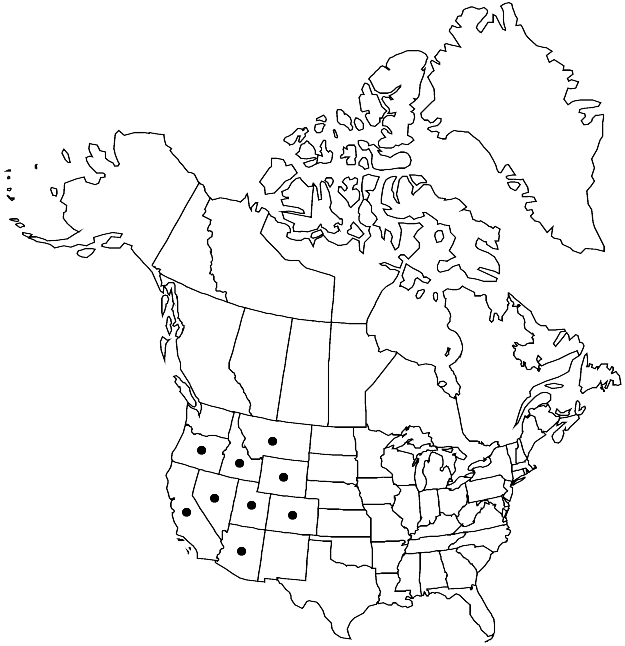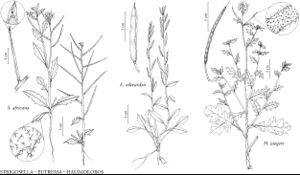Strigosella africana
Bot. Zhurn. (Moscow & Leningrad) 57: 1038. 1972.
Plants usually sparsely to densely pubescent, rarely glabrescent, trichomes short-stalked, forked or subdendritic, these, sometimes, with simple, subsetiform ones. Stems unbranched or branched proximally, (0.4–) 1.5–3 (–5) dm, pubescent. Basal leaves soon withered. Cauline leaves petiolate or (distal) subsessile; petiole (0.1–) 0.6–2 (–3) cm; blade elliptic, oblanceolate, or oblong, (0.5–) 1.5–6 (–10) cm × (3–) 10–25 (–35) mm (smaller distally), base cuneate, apex acute. Racemes: rachis straight or slightly flexuous. Fruiting pedicels 0.5–2 (–4) mm. Flowers: sepals sometimes persistent, (3.5–) 4–5 × 0.5–0.7 mm; petals narrowly oblanceolate, (6.5–) 8–10 (–12) × 1–2 mm; filaments distinct, 2.5–5 mm; anthers narrowly oblong, 0.9–1.1 mm. Fruits divaricate-ascending, straight, (2.5–) 3.5–5.5 (–7) cm × 1–1.3 mm; valves usually pubescent, rarely glabrous, trichomes coarse and forked, these mixed with smaller, forked, subdendritic, or simple, subsetiform ones; stigma to 1 mm. Seeds 1–1.2 × 0.5–0.6 mm. 2n = 14, 28.
Phenology: Flowering May–Aug.
Habitat: Fields, disturbed areas, roadsides, deserts, sandy flats, vacant lots, sagebrush and greasewood areas, grasslands, railroad tracks, shale outcrops, alkaline flats, juniper woodlands, plains
Elevation: 600-2400 m
Distribution

Introduced; Ariz., Calif., Colo., Idaho, Mont., Nev., Oreg., Utah, Wyo., Europe, Asia, n Africa, also in South America (Argentina)
Discussion
Selected References
None.
Lower Taxa
"elongated" is not a number."thick" is not a number."dm" is not declared as a valid unit of measurement for this property."dm" is not declared as a valid unit of measurement for this property.
